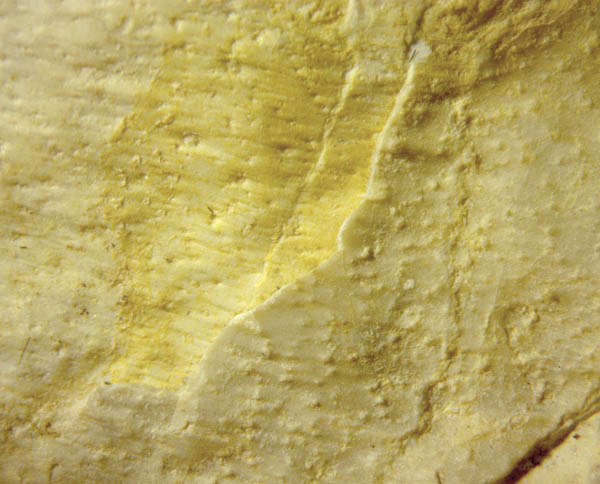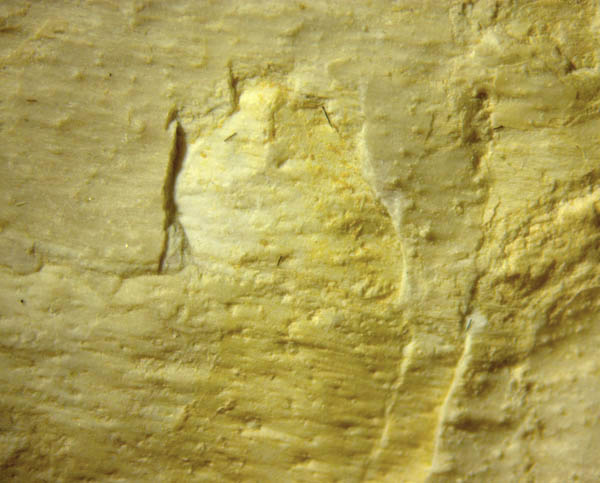Prickly frond stalks
of Permian tree ferns
Chert fossils usually
provide tiny details not seen on compression
fossils, like hairs on tree fern pinnules or book lungs
of trigonotarbids seen on cut and polished chert faces, for example. Fossil structures may also appear on crack faces if the fossiliferous chert is not homogeneously silicified but contains poorly silicified layers serving
as faces of easy crack propagation. Even a plant cuticle,
thin as it is, can become an easy crack path
in chert. Apparently this has been realized in the present sample where the
prickly surface of a frond stalk is exposed. As a surprising fact, it
is not seen from the
outside only,
as expected, but also from within.


Figs. 1,2: Surface of Permian tree fern frond
stalk with tiny prickles, seen also from within as depressions. Image
widths 8mm.
This
is one of the rare occasions where a crack face in chert reveals the
essential structure which would not be seen adequately on a cut face.
The
peculiar fact that both the outside and inside of the frond stalk
surface are seen on the same image requires an explanation.
The tissue of this frond stalk apparently had decayed so that
the stalk had
collapsed to a thickness
of about 0.2mm before
silicification. A crack had propagated along one of the flat
sides of
the collapsed stalk so that it is now seen exposed on the sample
surface with randomly distributed prickles. Subsequently, part of the
0.2mm fill of the collapsed stalk broke off whereby the opposite
surface of the stalk became visible from within, hence with depressions
instead of prickles, as
seen on the left of Fig.1 and in the middle of Fig.2. (The slighty
yellowish hue on part of Fig.1 indicates that this area had been laid
bare later.)
This sample does not provide features which would allow to assign it to
a tree fern species. It is from a site where hundreds of Scolecopteris
and Psaronius
fossils have been found so that the prickly fronds probably belong there. However, the possible presence of other
tree ferns at the same site should be considered.
Sample: Bu7/42 (0.71kg), Freital, Kohlenstr., Döhlen Basin, Lower Permian, found in 2000.
H.-J.
Weiss 2020
|
 |
 29 29 |

 29
29


 29
29